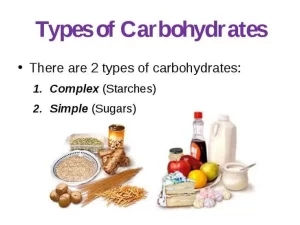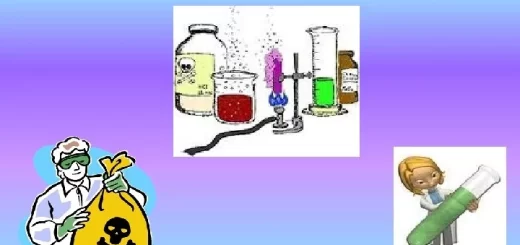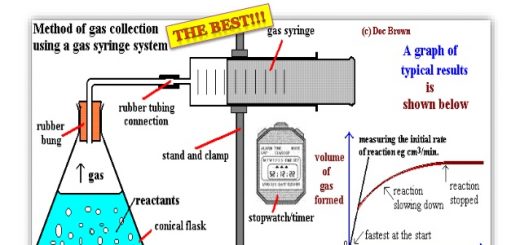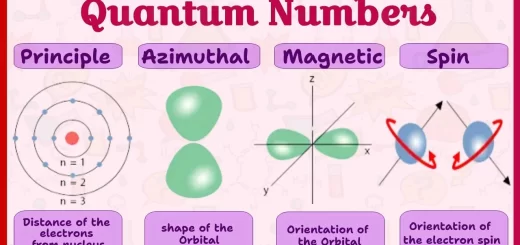Carbohydrates types, importance, sources, structure and tests results
Carbohydrates are found in bread, beans, milk, popcorn, potatoes, cookies, spaghetti, soft drinks, corn, and cherry pie, they are sugar molecules, Along with proteins and fats, carbohydrates are one of the three main nutrients found in foods and drinks, the body breaks down carbohydrates into glucose, Glucose, or blood sugar, is the main source of energy for your body’s cells, tissues, and organs, Glucose can be used in the liver and muscles for later use.
Carbohydrates
As their name implies, carbohydrates are compounds that contain C, H and O, and the ratio between H and O is the same as in water. Generally, there is one water molecule for every C atom.
Carbohydrates are classified into three main subclasses:
- Monosaccharides: which are the simple sugars that can not be hydrolyzed further by acids to simpler substances, and can be represented by the fo formula Cn(H2O)n.
- Oligosaccharides: which contain 2-10 monosaccharide units together by glucosidic linkages.
- Polysaccharides: which are composed of a great number of monosaccharide units, and therefore possess higher molecular weights.
Monosaccharides
These are the simple sugars, which can be described as colorless, crystalline, sweet substances, soluble in water, and insoluble in fat solvents. Because of the asymmetric C atoms they contain, they are optically active and give isomers, the number of which depends on the number of asymmetric C atoms present in each. Glucose is the best representative of monosaccharides, and is provided as a 1% solution to be tested by the Fehling test:
(1) Molisch’s Test
To 2 ml of the glucose solution in a test tube, add 2 drops of alcoholic α-naphthol, shake, and then pour carefully down the side of the tube 2 ml of conc. H2SO4, a reddish violet ring is produced at the interface of the two layers.
- This test is given by all carbohydrates.
- In this reaction, a green color may be developed, but this is due to impurities found in α-naphthol.
(2) Fehling Test
Mix 1 ml of Fehling “1” with 1 ml of Fehling “2” in a test tube, and put 2 ml of the glucose solution in another test tube. Boil the two tubes separately, then mix their contents while hot, a red precipitate of cuprous oxide (Cu2O) is formed.
- Fehling “1” is a copper sulphate solution, while Fehling “2” is a mixture of NaOH and Rochelle salt (Na-K tartrate).
- This test is considered positive if the color of the precipitate is red, orange, yellow, brown, or green depending on the concentration of the reducing substance.
- Report your observations and results on the tests of monosaccharides in a table.
Disaccharides
A disaccharide is formed of two monosaccharides combined together by a glucosidic linkage, the carbonyl group of one of them becomes attached to one of the alcoholic groups of the other.
Maltose is composed of two molecules of glucose linked together between C atom 1 (the carbonyl group) of one of them and C atom 4 of the other molecules, the carbonyl group of which remains free.
Lactose is composed of one molecule of glucose and one molecule of β-galactose connected together by β-1-4 linkage. The carbonyl group (c atom 1) of the glucose molecule remains free.
Since maltose and lactose possess free carbonyl (aldehydic) groups, they show reducing properties. Sucrose is composed of one molecule of glucose and one molecule of fructose which link together through their carbonyl groups and therefore sucrose is non-reducing.
Polysaccharides
Polysaccharides are compounds of high molecular weight. They are composed of numerous monosaccharide units linked together in a glycosidic fashion and forming long chains, which may be linear or branched. On hydrolysis, some of them as starch, glycogen, and cellulose yield one type of monosaccharides, whereas other yield different monosaccharides.
According to such variations in composition and structure, polysaccharides vary greatly in their physical and chemical properties, their natural function, and their general use. Starch is usually given as the main representative of polysaccharides.
- Molisch’s test: Like all carbohydrates, starch gives a positive Molisch test.
- Fehling Test: Repeat the Fehling test with starch Starch fails to reduce Fehling.
- Iodine Test: To 3ml starch solution in a test tube add 2 drops of I2 solutions, a blue color is obtained. Heat, the blue color disappears, but it reappears on cooling. Repeat this process (ie. heating and cooling) two or three times, the solution becomes permanently colorless. Starch – I2 compound is easily decomposed by heat, but in the cold, I2 reunites with starch giving the blue color. Continuous or repeated heating removes entirely the I2 from the solution.
You can subscribe to Science Online on YouTube from this link: Science Online
You can download the Science Online application on Google Play from this link: Science Online Apps on Google Play
Carbohydrates importance, Types of Isomerism, Monosaccharides & Disaccharides
Carbohydrates, Polysaccharides, Proteoglycans, Glycoproteins & Glycosaminoglycans




